In Part 1 of this post I started telling you about the "other stuff" first, which was my trip to Jazz Alley in Seattle to attend a Sergio Mendez concert with friends.
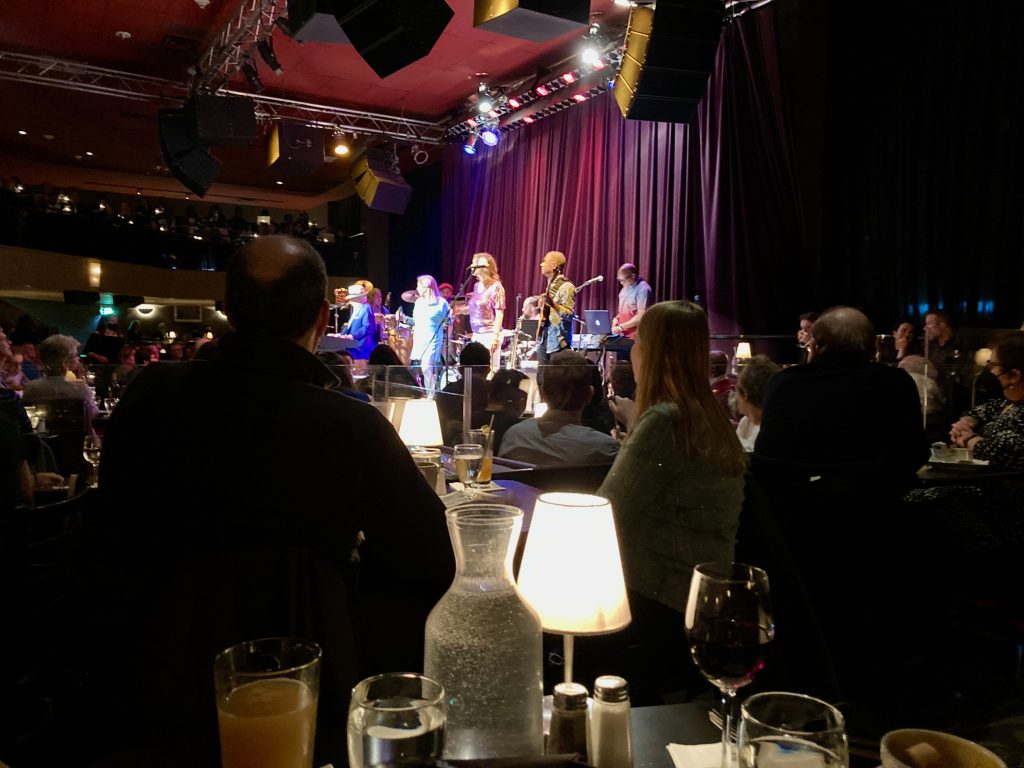
Sergio Mendez at Jazz Alley in Seattle in January 2022.
There's two reasons for that. Firstly I wanted to give you some ideas of additional things to do for those of you contemplating attending the Pacific Audio Fest in Seattle at the end of July 2022, and secondly, about how the live sound at Jazz Alley compared to what I am hearing from my primary music system.
At its best a live performance is hard to beat. Seeing the performers, feeling their emotion and passion in music-making, is something that can never be fully replicated in a hifi system playing back a recording of a performance.
Even when the live sound reenforcement engineers have the sound quality dialed in perfectly, when that live performance is recorded in excellent fashion with the best equipment, it's still pretty hard to match what you hear and experience by being there.
The simple reason for that is that a little something of the nature of a live performance is lost as the music goes through the microphones, mic preamps, cables, connectors, recording devices, etc., and then mixed and mastered and released as an LP, CD, R2R tape, or streamed.
The same holds for studio recordings, where a little something is necessarily lost due to all the steps of the recording and playback processes, regardless of how good the equipment is.
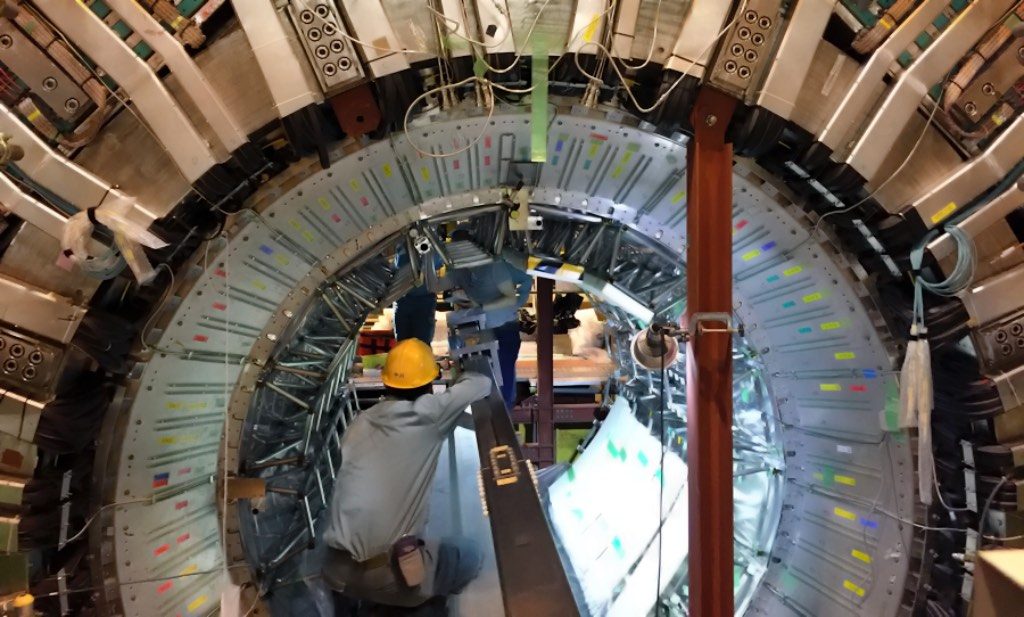
First-of-its-kind imaging Time-Of-Propagation counter (iTOP) being installed into the Belle II detector at the SuperKEKB accelerator complex at KEK in Tsukuba, Ibaraki prefecture, Japan.
In physics we call that the 'observer effect', where measuring something necessarily changes the result of the experiment somewhat.
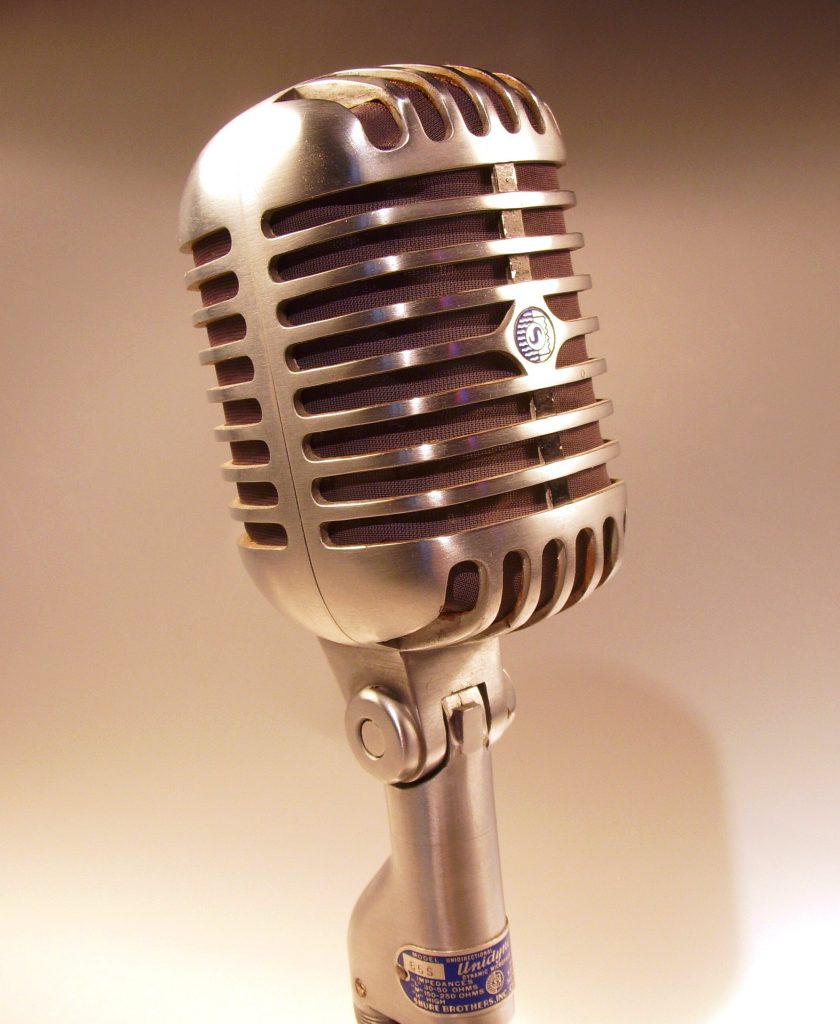
Shure Brothers microphone, model 55s, Multi-Impedance "Small Unidyne" Dynamic from 1951. Photo by Holger Ellgaard, shared under the Wikipedia Creative Commons license.
In our recording example, the microphone is the observer, and as good as some of the best microphones are, they can't perfectly capture/measure the sound waves of the frequency spectrum of human hearing without slightly (or not so slightly) altering them.
Each component in the recording and playback pathway also alters that signal being measured by the microphone, and the more the microphones / components there are, the more alteration there is that occurs, which is in accordance with the propagation of error calculations that every scientist and engineer learns in the introductory courses to their particular discipline.
So that means that you're never going to hear exactly that 'absolute sound' of the live musical performance from a recording.
But does that mean that what you hear when playing a recording on your hifi is always worse than a live performance? Not at all.
For example, over the almost six decades that I've been going to live performances of music - and I'll use Jazz Alley as my example - the live sound reenforcement engineers don't always get the sound right. The live sound quality can range from being amazing to being rather poor.
In the case of the Sergio Mendez concert, Sergio and the musicians in his band were amazing, but the sound reenforcement engineers missed the mark, and the sound quality the audience heard was pretty bad. I've heard the same venue sound great, but this time it didn't.

Triode Lab 2A3 P-SET RSR monaural amplifiers with Westminsters.
After getting back from Seattle, I settled in to listen to some music on my primary music system in my living room, which at the moment consists of my Tannoy Westminster Royal SE loudspeakers with Duelund crossovers, Audio Note (UK) AN-SPe silver loudspeaker cables, the Triode Lab 2A3 parallel SET RSR monaural amplifiers, Leben RS-100U line preamplifier, and Leben RS-30EQ phono preamplifier.
I'm in the midst of writing up the Positive Feedback feature article about the Triode Lab 2A3 parallel SET RSR monaural amplifiers (more HERE and HERE), and these components are the system context for the article.
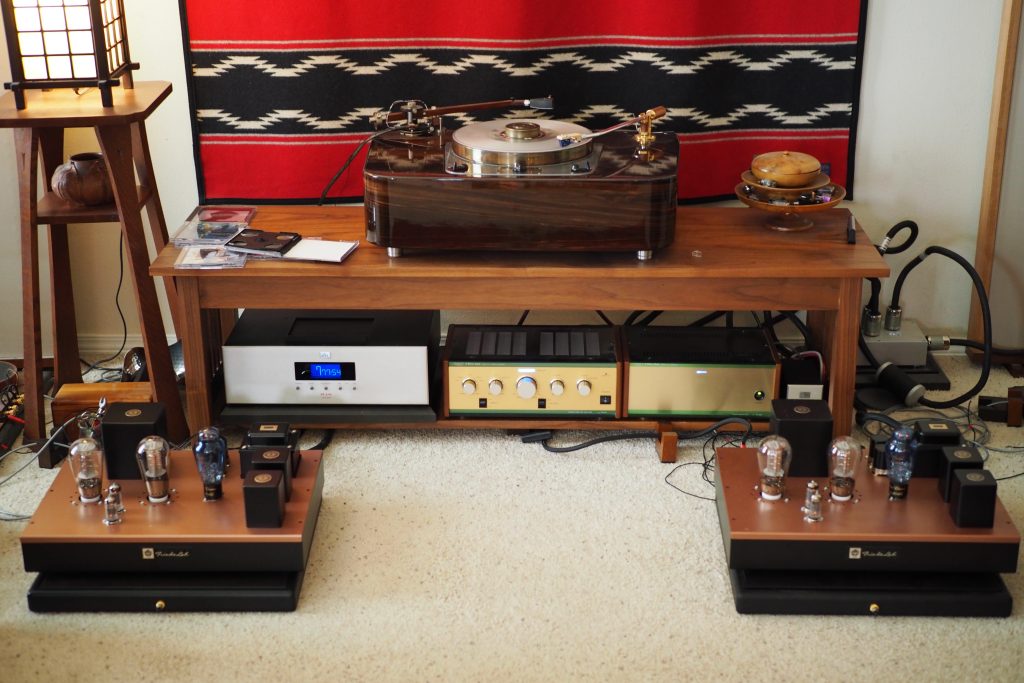
Triode Lab 2A3 RSR mono amps with Leben pre and phono, and Audio Note (UK) 4.1x CD player.
The sources were the superb sounding Audio Note (UK) 4.1x CD player (in for review, more HERE and HERE), and the exquisite Audio Note (UK) Io I MC phono cartridge, AN-S4 step-up transformer, AN-V silver interconnects (HERE), that were used with my CTC Garrard 301 turntable.
Power cords were Acoustic Revive 'Absolute', and line level interconnects were Belden 8402 microphone cable interconnects.
This system sounded so much better than the live performance at Jazz Alley that I had just attended that there was just no comparison.
So while recordings necessarily represent somewhat of a compromise of the actual sound of musicians, sometimes that compromised recording can be an altogether more enjoyable experience than that of a live performance.
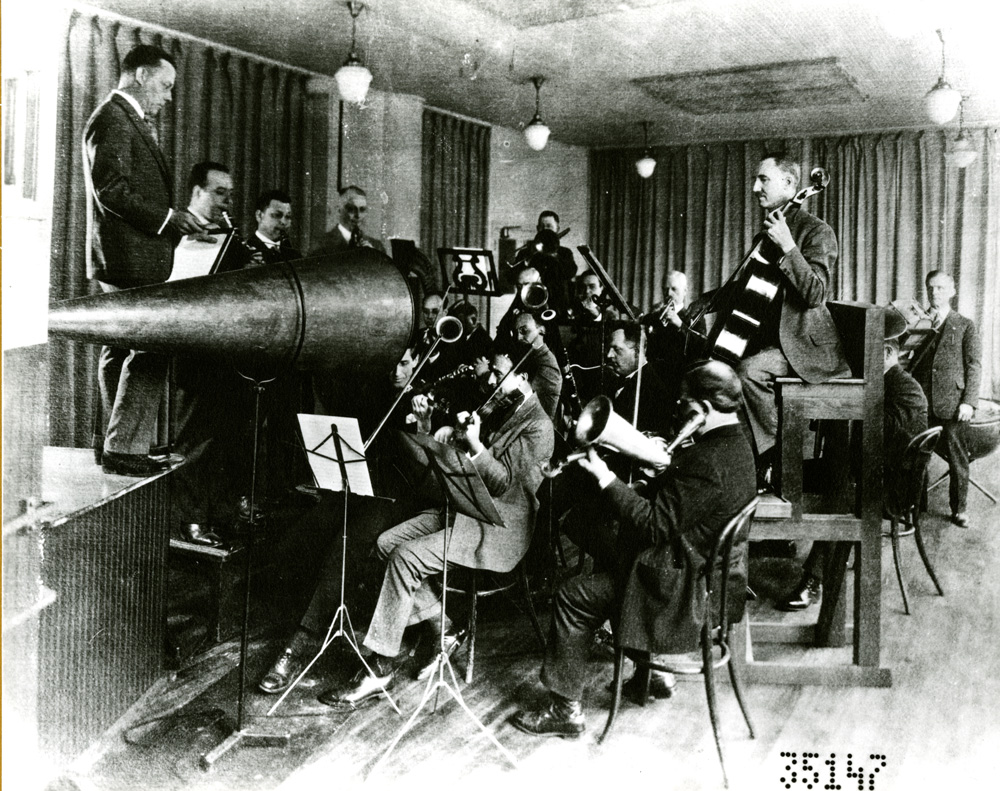
Early acoustic recording session. Photo courtesy of the US Library of Congress.
When I am listening to a 78 rpm direct-to-disc recording from the acoustic era of the recording arts (1877 to 1925), I know that usually means there's not much musical information above 6,000 Hz, and that the recording is likely to be - but not always - noisier than recordings from the electric (1925 to 1945), magnetic (1945 to 1975), and digital (1975 to present) eras of recording.
The uncanny aspect of that is, while almost any competently designed enthusiast hifi system can make the best recordings from the magnetic and digital eras of recording sound pretty good, most enthusiast audio systems fail at conveying the essence of the musical performance from the early eras of recording, and for those poorer fidelity recordings from the later eras of recording.
An audio system that does that can suck the joy out of listening to the music documented in our vast recorded music canon because it makes it sound annoying to listen to many of them. I know, as I've been in that situation myself.
It's like what happened at Jazz Alley when there was a great group of musicians playing, Sergio Mendes and his band, and the sound reenforcement engineer missed the mark and made the sound the audience heard suck.
It doesn't have to be that way with an enthusiast audio system though, as a well designed and voiced audio system can be made to play back recordings from any recording era of any recording quality, and still deliver the full essence of the musical experience while maintaining the 'authenticity' of the original recording.
The great 'audiophile' recordings of history still sound great, yet even those recordings of lower fidelity can still deliver the full musical essence of a performance without their lower fidelity getting in the way of an enjoyable listening session.
Sounds impossible doesn't it? It's not, and there are a number of designers / manufacturers who have figured out how to accomplish that sort of musical 'miracle' very successfully.
Individuals like Nelson Pass and Wayne Colburn (First Watt and Pass Labs), Peter Qvortrup (Audio Note (UK)), and Frank Ng (Triode Lab), for example, and others, have figured out how to design and build equipment that will do just that.
I've been fortunate in that I've been able to interact with a lot of the best audio designers and manufacturers on Planet Earth over the years, and I have really learned a lot from them.
They all have somewhat different takes on what makes for the kind of performance I desire in an audio system, which is an audio system that can make almost all recorded music an enjoyable listening experience.
Granted, it you recorded me playing a guitar, there might not be an audio system that could make it an enjoyable listening experience, but I think you get what I mean.
It is possible in recordings of good musicians playing good music to have an enjoyable listening experience regardless of the fidelity of a given era of recording or the fidelity of a given recording within a particular recording era.
I think that's really good news for all of us who love to listen to music. Get the right equipment, get the voicing dialed in, and enjoy all that our massive recorded music canon has to offer. That's where I want to be in this hobby.
Actually, that's where I am in our delightfully nerdy hobby. I've got numerous examples of the 'right equipment' here at Jeff's Place, some of it being my own, some of it on long-term loan, and some of it in for review.
I've also listened to smart people who have insights about how to get the voicing right, and have learned how to do that myself. Most of the time.
Audio Note (UK)
Long before I ever had the opportunity to meet and talk with Peter Qvortrup, or listen to his Audio Note (UK) components in my own home, I was always impressed by how good the Audio Note (UK) rooms were at the various audio shows I have attended.
Without exception, all of the Audio Note (UK) show systems I heard were entry level systems that were affordable in the scheme of things, and in terms of an enjoyable listening experience they easily outperformed 'high-end' systems that cost many multiples of their price point.
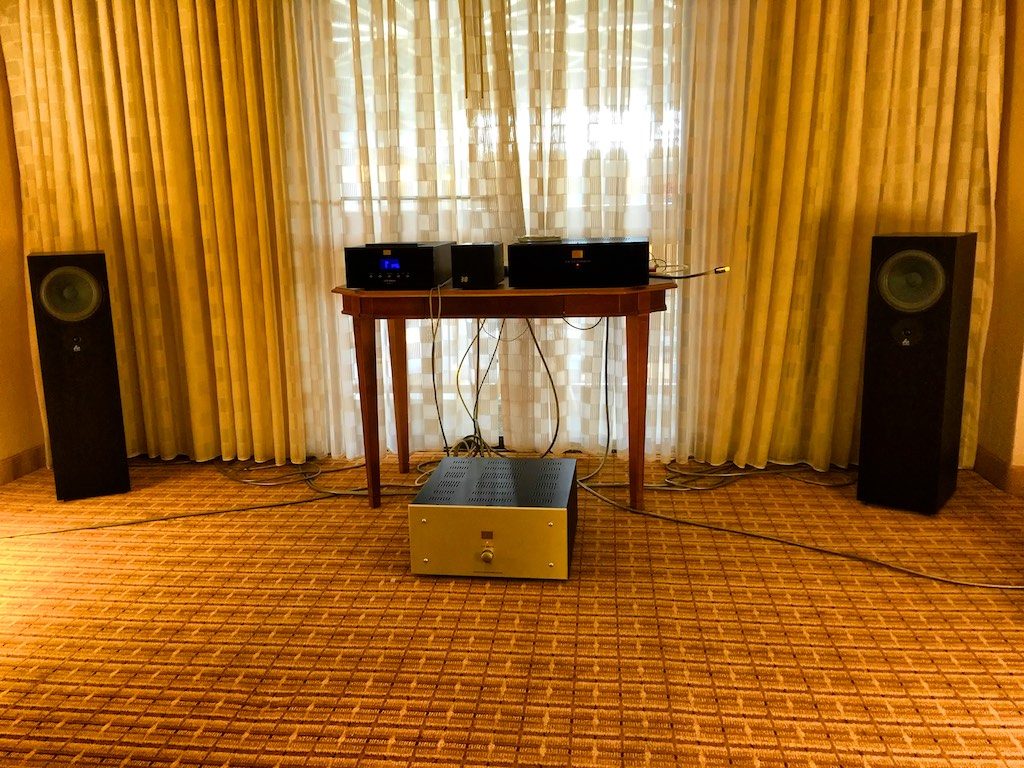
Entry level Audio Note (UK) system at an audio show.
I was always puzzled by that. How did those affordable Audio Note (UK) systems embarrass most of their expensive competition so routinely?
Well, first of all, the most obvious observation is that the price of an audio system or component isn't always a reliable indicator of performance.
Sometimes enthusiasts think that if they spend more on equipment they'll get better performance. Sometimes that is true, but oftentimes it's not.
There's a couple of the things that matter in that equation, the first being that at the individual component level the components have to be voiced in such a way - as with Peter's 'comparison by contrast' method of voicing - that they are capable of making a recording of music an enjoyable listening experience.
Secondly, all of the components in a system, from source to loudspeakers, must compliment each other - the system synergy thing.
Some of the worst performing audio systems I have heard are mis-mashes of expensive 'recommended components' from audio reviews.
That's an issue I have to deal with every time I write an article for Positive Feedback. In a perfect world I would have a system where every component was designed to be complimentary to the other ones in the system.
The reality is that I have a variety of high-quality equipment on hand, but not all of them are designed to 'play well' together. The key is picking out the components that do play well together, and then getting the system voiced at its optimum for that set of components.
The more components from different manufacturers you have in a system, the more likely you'll have a mismatch and a bad sounding result.
As my friend Sebastian used to say, "keep it simple Sebastian." The KISS principle, which is sometimes misquoted as "keep it simple stupid".
Then there's Einstein's "Make it as simple as possible, but not simpler."
Both those smart guys - Sebastian and Einstein - were really onto something.
If I could offer one bit of simple advice it would be to find a manufacturer where you really enjoy their take on making music, and build your system from source to loudspeakers based on that manufacturer's products. That's the easy way to do things in audio.
Only a few manufacturers offer the benefit of being able to assemble a system that way, Audio Note (UK) being one of them.
Peter's and my plan is that one of these days - in the not too distant future - I am going to write a feature article for Positive Feedback about listening to a KISS full entry-level system of Audio Note (UK) components.
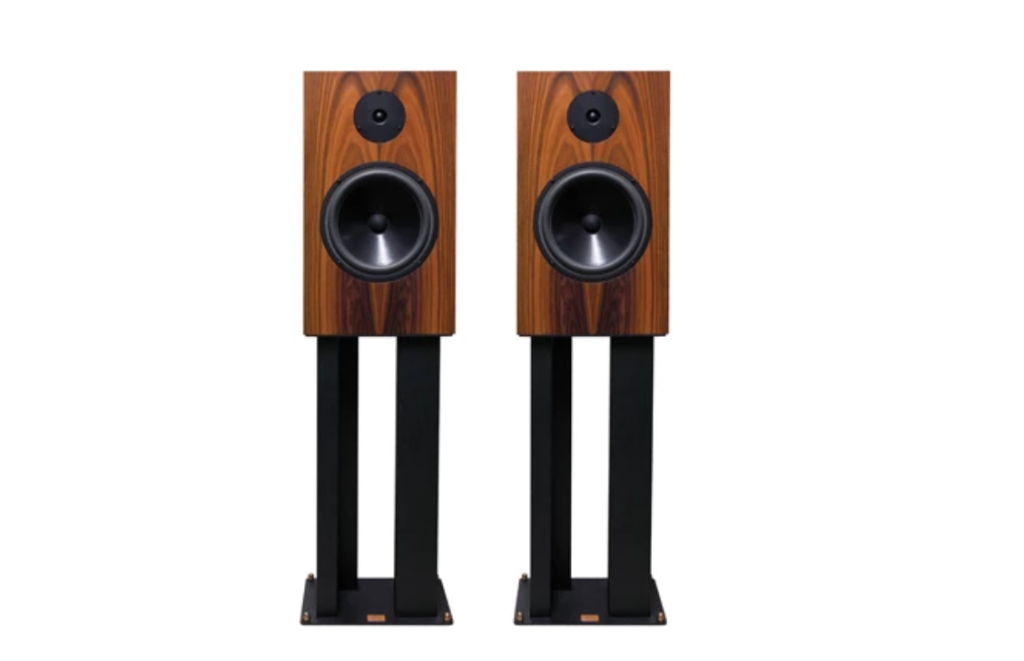
Audio Note (UK) AN-K loudspeakers and stands.
That's right, we're doing a 'keep it simple Sebastian' approach to a system, which will be comprised of Audio Note (UK) AN-K loudspeakers (above), their matching stands, the Oto Phono SE Signature integrated amplifier (review HERE), the CD 2.1x/II Level Two Red Book CD player (review HERE), and whatever cables Peter recommends to go along with them.
I have everything here but the cables and the AN-K loudspeakers, which have been delayed for a while do to supply chain issues related to the wood the cabinets are made of.

AN-S4/L SUT with the Oto integrated amp.
A little more on the KISS principle. Part of the reason I love integrated amplifiers is because they can combine multiple components in one chassis: the preamplifier, the amplifier, and the phono stage, for example. Like the Oto. That does away with a lot of the potential synergy issues of separate components, as well as additional interconnects and power cords.
I also really, really, have enjoyed the CD 2.1x/II Level Two Red Book CD player for a similar simplicity reason.
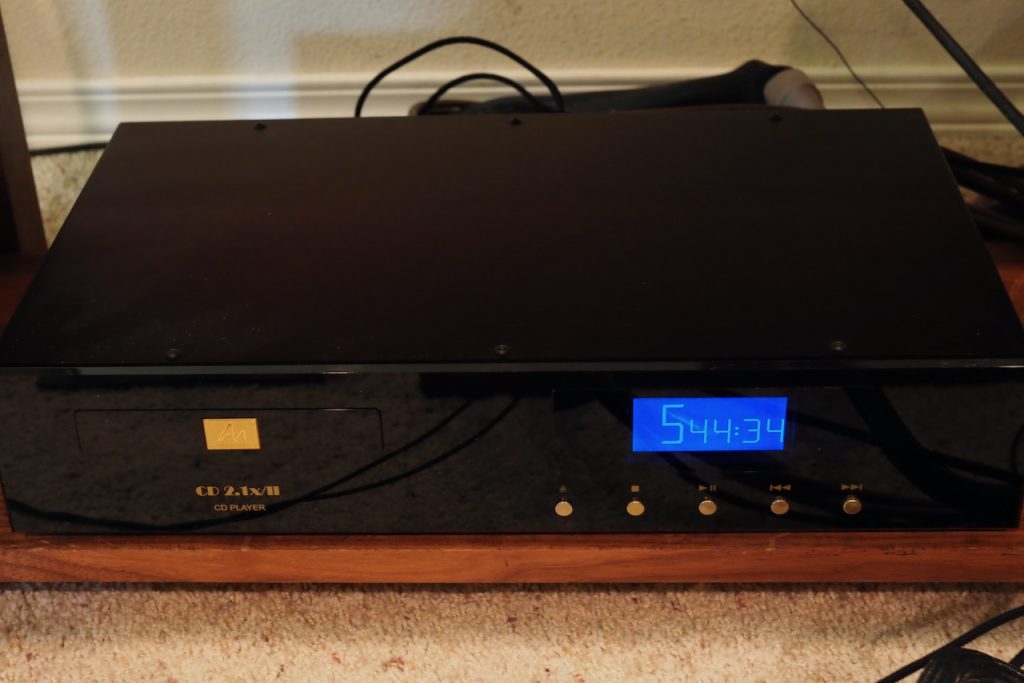
CD 2.1x/II Level Two Red Book CD player.
Of late I've become consumed with desiring to listen to music that spans the acoustic, electric, magnetic, and digital recording eras, and a CD player allows for that as music from all of those eras of recording are available in the CD format.
Of course, if we followed Einstein's "Make it as simple as possible, but not simpler." advice, we'd add a phonograph in to complement the Oto's fine sounding phono stage. One step at a time though.
So expect to see me writing about a full Audio Note (UK) KISS system in the not too distant future.
I've had a number of you ask me about when Peter and I are going to do our brainstorming session for a new audio reviewing terminology. Coronavirus. Ever since coronavirus appeared on the scene most international travel has come to a stop, so I haven't been able to go visit Peter in Brighton, England so we could hammer out the new vocabulary. But we'll do that when it is safe to do so.
Oops, I just noticed I'm out of time for writing today, so I'll continue the rest of the Audio Note (UK) update in Part 3, along with updates on Triode Lab, analog and digital, SET and solid-state, and music.
As always, thanks for stopping by, and may the tone be with you!



























